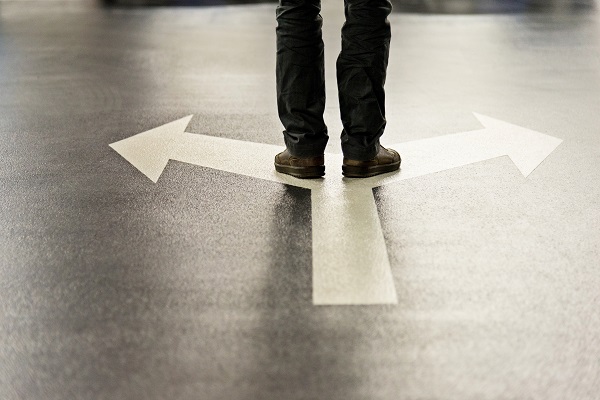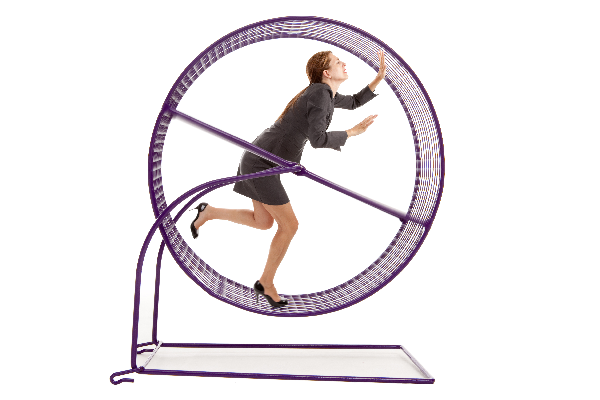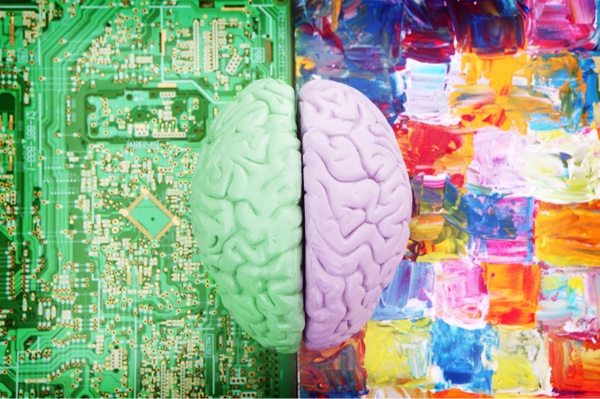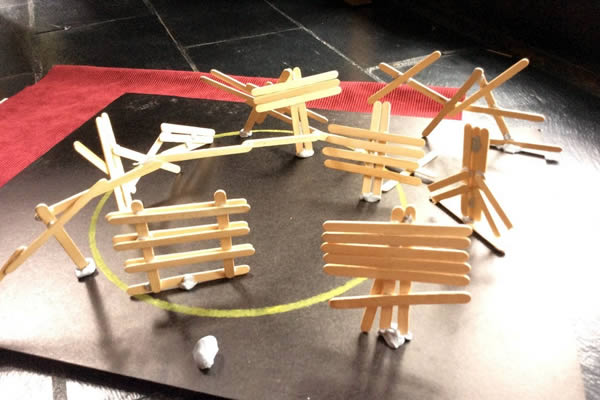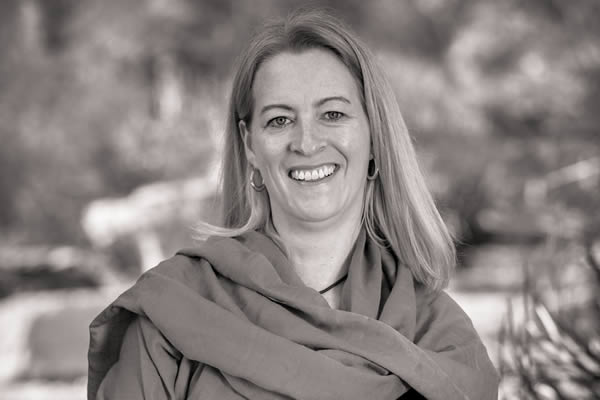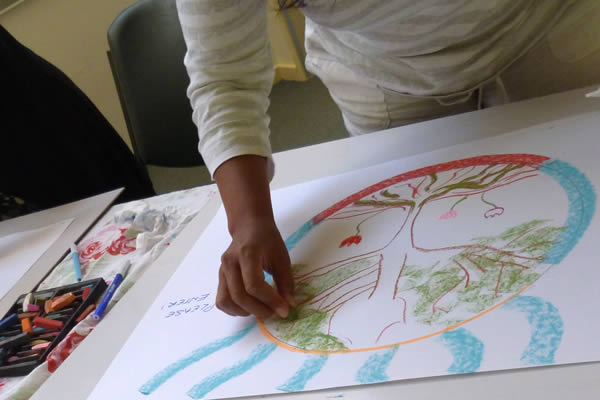This post outlines our 5S Leadership Self-Care Model focusing on the practice of ‘selfcare’ to bring yourself out of your head and into your body, connecting more with ‘feeling and being’ and reconnecting with what matters to you. The 5S Leadership Self-Care model provides a roadmap to explore and experiment with establishing or refining the practice of self-care to restore wellbeing and help you to find a sustainable self-care rhythm that works for you.
Continuing on the theme of my last post about being stuck on the ‘thinking and doing’ treadmill, this time I want to outline our 5S Leadership Self-Care Model.
Self-care refers to the practices, habits and routines that we engage in on a regular basis to reduce stress and maintain and enhance our short- and longer-term health and well-being (social, emotional, physical, psychological). Optimal wellbeing and high levels of personal resilience are not possible without an intentional focus on self-care. Source
- It doesn’t come easily for most people.
- Optimal wellbeing* isn’t possible without self-care.
- Wellbeing is one of the outcomes of the practice of self-care.
- Your ‘sustainable self-care’ needs and practices will be unique for you
- Self-care is a choice that you make. It starts with you.
- It’s a practice – like learning a new skill, it takes time and commitment
*“Wellbeing is so much more than the absence of illness. It implies flourishing, thriving, being fully alive. balanced and calm & contented and at ease with life.” – GLWS
5S Leadership Self-Care Model
1.Space
Carve out the space in work and life to focus on your personal development. In just the same way that you schedule meetings with others, schedule ‘personal development/self-care’ ‘meetings with yourself’ in your calendar.
Give these ‘appointments’ the same priority you would if they were meetings, which may involve setting some healthy boundaries. You might need to say ‘no’ to some requests or things that feel like ‘shoulds’. You may need to more assertively express your needs to your partner, colleagues or team. It may require taking yourself away, perhaps booking into a retreat or a place in the country for a couple of days by yourself. During these personal development sessions, turn off your phone, find an inviting location where you won’t be interrupted, remove all distractions and show up fully by yourself for yourself.
Creating space is where it all begins. It allows the external ‘noise’ of life to quieten down enough so that you can hear your own breath and feel your own heartbeat.
This post outlines a personal story as a great example of the need to carve out pockets of space in our lives and/or moments to take a balcony perspective. Unless we do that, it can be difficult to see what is right under our nose.
I choose to let go – Why we need space to reflect
2. Stillness
Within the space you have carved out, welcome stillness. You may experience some resistance and an urge to be distracted away from stillness – that’s normal. Stay with it. You can use some of the tips in these two previous posts to begin to notice your breath, quieten your mind, etc.
7 ways to access deeper levels of consciousness
Stuck-on the doing treadmill. This might-help
The idea here is to shift away from your racing thoughts and begin to access how you are feeling and what you are noticing in your body. Given the pace at which most of us operate, this definitely requires a transition of some sort, so be kind to yourself and keep it short at first – even five minutes is a great place to start. It’s only through stillness that we can get beyond the mental chatter that doesn’t serve us and bring our focus and attention back to the things that really matter.
3.Self- expression
Whether it is by writing, singing, drawing, sharing openly and honestly with a trusted other or by some other means, you need to be expressing how you are feeling. When we express how we are feeling and what is happening for us, we learn about ourselves and the world around us. The very act of expressing how we are feeling helps energy stuck within us to move through us, enabling us to reflect. It helps us gain clarity about where to next place our energy and attention. It strengthens our connection to self and, when we share openly with a trusted other, it builds connection.
There are so many possible ways of expressing how you are feeling, but here are a three examples:
Start a Journal. One of the most time-honoured, simplest and most powerful ways of capturing your thoughts and feelings. Set a time each day to write in your journal. Until it becomes a habit in its own right, it’s a good idea to attach your journal time to an existing habit, for instance while having your morning coffee.
Your task is to simply write about anything that wants to be written about. Just get out of the way of yourself, ignore the internal critic and put pen to paper. Remember that you’re only writing for yourself. You may write about how you are feeling or what is present for you. Reflect on what is going well for you and explore anything that you have been triggered by. Anything that has an emotional charge for us is a gift – if we can take the time to understand why it has that charge. Writing helps us to open different perspectives. It clears the mind and opens the heart.
One way to get started, or change things up, might be to try the Morning Pages practice as outlined by Julia Cameron.
I use a cheap A4 notebook for my journal as I feel freer just to write without having to produce a work of art. I rarely ever read my journal again – it’s about a download and a tool to process and make sense of what’s happening in life rather than recording my life.
New Experiences. Seek out different people, places and experiences, bringing an attitude of curiosity into all that you do. Our senses are an important way of connecting our external experiences with our internal world of ‘feeling and being’, and new experiences bring our senses to life. If you’ve never tried art, perhaps now’s the time.
Start close to home. Expression doesn’t always need to be in words. Why not trying having a long-held hug with someone that you love. Count to 20 seconds; you can’t help but melt into each other. It’s magic.
Self – expression goes hand in hand with the first of our Leadership Super Power practices – Reflection. These posts offer some great tips and reflective questions that can kick-start your process of self-expression:
Reflective practice: a leadership super power
Making reflective practice a reality – no matter how busy you are!
4. Self-compassion
Self-compassion is a measurable trait. In 2003 no-one had defined or measured it. In 2017 there were 1340 studies on self-compassion. Self-compassion is strongly linked to wellbeing.’ Source: Neff 2018
Self – compassion is about learning to becoming your own best friend. This is about turning the compassion that you undoubtedly make readily available for others into watering and nourishing yourself. Kristin Neff, is world expert on self-compassion. Part of what she offers in her work is a radical shift to ‘relate to self’ in new ways.
Kristin defines self-compassion as:
- being a good friend to yourself
- treating yourself the way you would treat a good friend; and
- holding pain with love.
The first step is develop self compassion is to learn about self-compassion. This blog post –“Are you being a good friend to yourself” is a great place to start.
5. Support
Find the right support for you. It may be friends, your manager, a leadership development workshop or program. It’s often challenging to go this alone and having someone to ‘walk’ alongside you can accelerate the process. Engage an leadership coach if you feel you would benefit from non-biased, professional support to help you reach your self-care goals and to hold you to account. Or if you are a senior woman you might be interested in Cultivating Well 1:1 Coaching Program.
Summary
By taking committed action to the elements that make up our Leadership Self-Care Model you will be taking a major leap forward with your own self-care.
To commit to self-care is to value yourself, your relationships, your professional work. That’s simply too important to ignore.
Please reach out if we can help.
____________________________________________________________________________________________
Needing an overall wellbeing health check? You might like to consider the completion of a Global Leadership Wellbeing Survey (GLWS) . Designed for senior leaders, this survey will help you understand your state of wellbeing at work and at home and is supported through a debrief and development coaching conversation. It can be a great way of beginning your journey towards greater self-care and provide key inputs to help you establish a sustainable self-care rhythm. Contact us for details.
In a previous post Mastering ‘thinking and doing’ AND ‘feeling and being’, I discussed how out of balance we have become as leaders, spending too much time ‘thinking and doing’ at the expense of ‘feeling and being’. I argued that this is affecting us at a physiological and behavioural level, with flow on effects on our relationships, connection, life and leadership.
Living life solely from our heads – thinking and doing – and only stopping when we fall exhausted into bed each night keeps us stuck on the ‘doing’ treadmill. We wake up and do it all again. Day after day. Week after week. Year after year. It’s exhausting. And it’s not sustainable.
Sound familiar to you or someone you know?
What are some of the ways this is impacting your/their lives?
I know about this first hand because, as I mentioned in that previous post, ‘thinking and doing’ was all I knew really for the first 36 years of my life. I was surviving but not thriving. It took illness and injury for me to finally wake up and make a change. I learned the hard way.
But you don’t need to do it the hard way. I wanted to share what I now know in the hope that you can circumvent the avalanche that came my way and make a conscious choice to make positive change now. Today, I mean. Got it? (Or if not you, is there someone else that you are concerned about who needs to read this?)
Here is what I know:
- Only you can be your own rescue – no one else. It is up to you.
- You have to acknowledge what is currently not working and how it is keeping you from who and how you want to be. You know that little nagging voice inside you that has been telling you that something needs to change? Make a conscious choice to listen to it. (It wants the best for you).
- Set a clear intention and take committed action.
- Small simple steps are the best way to start. There’s no need to rush out and join the gym or make some other big investment or decision. Begin with small, simple steps.
Examples of simple steps:
- Simple breathing for 2 to 5 minutes, morning and night. Put a timer on, close your eyes and place your hands comfortably on your lap. Bring your attention to your breathing. Noticing our breath connects us back to our body. When did you last consciously breathe?
- Listen to some relaxing music for 5 to 10 minutes before you go to bed. Give your body some simple stretches as you listen to the music or simply close your eyes and let the music carry you away. What is some of your favourite music to relax to? Create a relaxing music playlist or get a ready made one on Spotify or Apple Music.I’ve included a couple of my favourites here:
- Start (or return to) a short meditation practice:
- My Yoga Nidra meditation teacher John Vosler has a free 10-minute guided meditation that you can access here.
- There are many great apps if you want to start or return to a meditation practice. Try out Oak and begin to grow your own tree. Or Smiling Mind is another popular app.
- Take your shoes off and go and stand on the earth, the sand, the grass. Close your eyes and just spend time noticing your feet on the ground, the sounds around you and the air on your skin.
5. Attach a new habit to an existing habit. For example, if you get up each morning and the first thing you do is make a cup of tea, add a new ‘simple step’ right before that one. So now you get up and sit in a chair in the loungeroom and notice your breath for five mins, then have your cup of tea. Do the same in the evening, this time linking the new habit to cleaning your teeth, for example. (Charles Duhrigg’s book The Power of Habits is a great read on this topic.)
In my next post, I will outline my five ‘s’ model – great practices and experiences that you can add to your toolkit to bring you out of your head and into your body, connecting more with ‘feeling and being’.
In my last post I introduced the concept that the mind is much more than just the brain, with recent research indicating real neural connections between the brain, heart and gut. I also talked about the long recognised notion that most of us only use a very small proportion of our consciousness. There are implications – and opportunity – in this for leaders in a highly complex world.
This time I want to explore a few ways of accessing the ‘other 90%’ of our minds.
Fundamentally what we are talking about here is deepening our connection with our inner experience: the ‘below the waterline’, internal individual component of the Integral Model that underpins our work.
However, if this all sounds a bit mystical, it needn’t. The reality is that there are some straightforward ways we can bring more of our subconscious and unconscious treasures to the surface:
Connection with our personal values
When we realise that something feels uncomfortable to us, our body will tell us that it is out of alignment with what our personal values. We literally have a physical response. It might be tightness in the chest, our voice getting higher as we speak, or even saying words that are incongruent with what is important to us. We might feel sick in the gut. Tune into these bodily responses and what is causing them. You can check in on your personal values here.
Connection with feeling and sensation
A good way to start this is to consciously connect with your breath. Try this 6 minute counted breath experience that I recorded to help you to begin to notice what’s happening in your body. During this experience, I invite you to float the following questions, ‘What’s alive in me?’. What thoughts? What feelings? What sensations? This will increase your capacity to observe your self. You may like to take a moment at the end to write down in paper what you noticed.
Quieten the mental chatter
It is estimated that something like 80 per cent of our daily thoughts do not serve us. They are just like the ‘white noise’ on an out-of-tune radio. These thoughts get in the way of us making good decisions and choices and instead feed reactive behaviour. Learning techniques such as mindfulness or Yoga Nidra meditation helps to quieten the mind. They give us a break from our stress-producing thoughts and create the space and stillness for us to connect with our body sensations. And they allow us to hear our inner voice, our ‘wise knowing self’ beyond the mind.
New experiences that temporarily bypass the left side of the brain
I mentioned last time that most of us tend to think predominantly with the left, logical, side of the brain. We can access the right side of the brain – the creative, intuitive side – through experiences that encourage this. One example of this is the experience of art therapy. Such experiences work well provided we are prepared to be open to the experience and trust the process.
Physical practices that bring us into our body
Walking, being in nature, yoga, riding, swimming. In fact any physical experience in which we can be fully present, taking quiet time during or afterwards to connect with the sensations in our bodies. (If you have experienced yoga, you may be familiar with the meditation or shavasana at the end of a yoga practice that encourages this post-activity connection.) Sensation is the only way that our bodies have to communicate with us. Unfortunately, many of us walk around in life either numbing sensation with the use of alcohol, other drugs or pain killers, or not listening to it. When we make a conscious choice to begin to listen to what our bodies are telling us, more of our inner resources become available to us.
Time in nature
Related to the notion of physical practices is the idea of simply building into your day, your week or even your month time to ‘be’ in nature. No phone, no one else. Just you and your breath and your step. (I expand on this idea in this previous post.)
Major life experiences
This is not as straightforward as my other suggestions but it is something to be aware of. Sometimes to open to something beyond the mind – to begin the journey to ‘wake up’ – takes a major life event. It might be the death of a loved one, a serious illness, an accident or other tragedy. The significance of such events makes us feel the experience deeply, and the feeling of the experience allows something deep and previously hidden to reveal itself. Our hearts open up and find available to us inner resources not previously available to us.
With the exception of the last, which is really beyond our control, the other six approaches above should be readily accessible to anyone – even the busy leader.
The key here is for you – the individual leader – to recognise that something needs to change and deliberately and intentionally making the choice to integrate one or more of these suggestions into your daily or weekly rhythm.
From an organisational perspective, incorporating feeling and being practices into shared learning experiences for teams – for example sponsoring employees to participate in Mindful in May or taking your team offsite for a day to participate in an Urban Retreat for Teams, can be wonderful catalysts to create a shared ‘feeling and being’ language and experience that can then, with the energy and desire of the group, take on a life of its own in the workplace.
‘I have no doubt that most people live – whether physically, intellectually or morally – in a very restricted circle of their potential being. They make use of a very small portion of their possible consciousness, much like a man (person) who out of his whole bodily organism, should get into a habit of using and moving only his middle finger.’ – William James, the ‘father of American psychology’
I spent the first 36-plus years of my life firmly stuck in my head. Like most people, I was under the impression that that was where we do our thinking and feeling. I thought that the brain – the body’s computer – was responsible for all that stuff, and that it was pretty efficient at it as well. And to be honest, my head had served me pretty well to that point.
It took a major life experience to crack that paradigm wide open and cause me to look at the whole idea of the mind quite differently. In doing so I learnt about some very different ways of looking at consciousness. I started to explore different perspectives of consciousness and new ways of accessing deeper levels of it.
It has been recognised for over a hundred years that we typically use only a small part of our minds. Freud’s model of the human mind suggested that only about 10% of our mind’s work is conscious and readily available to us, with 50 to 60% subconscious and the remainder a level deeper in the unconscious.
It has also long been recognised that many of us tend to think more with the left ‘logical’ hemisphere of our brain and very little with the right ‘creative’ side.
Over time other models of the mind have evolved, most of which separate the concept of the ‘mind’ from the physical organ that is the ‘brain’. One of those which is gaining increasing focus recognises that the mind extends well beyond the brain and into the rest of the body. In fact there are three centres of the mind: the head, the heart and the gut.
If we stop to think about it, this is intuitively true. We can all identify times when emotions seemed to have literally ‘pulled at our heart strings’ and brought us to tears, and even gently placed our hand over our heart. Or in another situation a “gut feeling’ may arise, we may even pause momentarily…then to rationalise the feeling away. It’s interesting how this ‘gut feeling’ can then cause discomfort in our gut or even put us off eating altogether. What if we could tap into all three centres of the mind: head, heart and gut?
Grant Soosalu and Marvin Oka of mBraining go as far as to call each of these centres separate ‘brains’, (just to confuse the mind/brain thing) the ‘heart brain’ being responsible for emoting, values and relations, the ‘gut brain’ for our core identity, self-preservation and mobilisation, and the ‘head brain’ for cognitive perception, thinking and making meaning.
Cassandra Goodman notes in a recent article on Linkedin that research in the field of neuroscience is starting to take this thinking beyond the anecdotal, identifying real neural connections between the head and the heart and the head and the gut.
A lot of this is new science and still controversial, but the evidence is mounting.
Implications for leadership
The pace and complexity and ambiguity of today’s working environment is making life challenging for many leaders. Whether you find that yourself or you see it amongst the people you work with, I’m sure you know what I’m talking about.
Leaders – whether in business, the not-for-profit and community sectors or in politics – are increasingly expected to look beyond one-dimensional outcomes in which ‘the end justifies the means’. Both employees and customers want more. Employees are looking for greater purpose in their work. They expect that their workplace will improve rather than hinder their wellbeing. Customers want to know not only that a product or service is going to meet their needs but that it was created in an ethical, fair and sustainable way.
And we know these challenges are only going to increase.
Given all of this, it simply makes sense that leaders – and by extension all of us – need to find ways to access a greater proportion of our mind. Today’s well-rounded leader needs to be able to access the whole of their brain (left and right sides) – their head centre – as well as their heart and gut centres.
The question is, how can that be done?
How to access more of the mind
The trick here is to learn new techniques for accessing – to return to the Freud model – the 90% of the mind that we don’t normally tap into. Or to use the three centres model, to get out of our heads and tap into our heart and gut centres.
My discovery was that there are all sorts of ways this can be done. There are all sorts of ways we can begin to access the an inner dimension of ourselves and bring to the surface more of our subconscious and unconscious ‘treasures’.
I’ll share some of what I found in the next post.
This post explores how leaders must master the dance between ‘thinking and doing’ and ‘feeling and being’ to increase personal wellbeing and their capacity to solve the complex problems and challenges of our times.
What’s happening in your world right now? What are some of the things you have been busy ‘doing’ over the past 48 hours? The daily tasks and activities that fill up your life?
At what times over the past 48 hours have you found yourself connected with something more enduring: time for meditation, reflection, a walk on the beach, a cuddle with a loved one? Times when you were 100 per cent present in the moment, fully connected to ‘feeling and being’ rather than just ‘thinking and doing’?
When we become exclusively focussed on ‘thinking and doing’, our lives can start to feel meaningless and empty and we start to wonder why we work so hard. We may secretly ask whether it’s worth it. What’s the point? What’s the meaning of life? If we don’t listen, life keeps throwing stuff at us until we do.
I spent first 36 years of my life thinking and doing, focussed on external measures of ‘success’. I didn’t listen, and I crashed. I crashed multiple times in fact. I suffered post-natal depression. I had a moon boot on a broken ankle for nine weeks (that turned out not to be broken ironically). And more … until I listened to myself. After I listened I started to open to ‘feeling and being’.
The last decade has been a deep immersion into feeling and being. I’ve been learning the practices that connect into the wisdom of my body and my intuitive self. My internal navigation system now leads the way in life and business.
It’s not that ‘feeling and being’ is better than ‘thinking and ‘doing’. They are a powerful partnership. It’s just that in the world we live in and the workplaces that we show up to everyday, ‘thinking and doing’ is valued whereas ‘feeling and being’ is undervalued. That is the problem.
It’s also the opportunity.
Human organisations value both ‘thinking and doing’ and ‘feeling and being’. Both are interwoven through the culture of the organisation, through its very fabric of decision making, leadership mindset and practices, investment allocation, behaviours and customer experience. Many start-ups do this well. The organisations that will thrive in the future will be those that can evolve to welcome feeling and being to the table as the equal, if not wiser, partner of thinking and doing.
Robert Johnson, a student of Carl Jung and well established in his own right, refers to the power of the symbol of the Christian cross in his book Balancing Heaven and Earth. He writes, “I have come to understand the cross as a symbol of two opposing forces that must be balanced, with the balancing point always in the middle of where the two strong opposing forces intersect.” (page 48)
While I am not religious myself, the visual idea of achieving optimal performance at the intersection of the cross where ‘thinking and doing’ (the horizontal) meets with ‘feeling and being’ (the vertical) is a powerful daily reminder.
In workshops I have had participants create their own version of the cross (using Blu Tack and icy pole sticks) based on how they feel they are putting their energy and focus into these two opposing forces in their lives. The models people create provide a powerful visual of the impact that being out of balance has on their lives and invites curiosity and change. When you then put a collection of these individual models together into a ‘community’, you quickly get a sense of the discomfort and suffering that is being experienced in families, teams, organisations and communities. I believe the core of this discomfort comes back to this challenge of balancing ‘feeling and being’ and ‘thinking and doing’.
What does this mean for leadership?
The complex problems and challenges of our time will not be solved by thinking and doing alone. As leaders, optimal performance and personal wellbeing is available to us when we learn to master the dance between ‘thinking and doing’ and ‘feeling and being’.
When we make a commitment to practicing and mastering this dance at an individual level, then we transform ourselves, and in turn also transform our families and the teams, community, and organisations in which we serve.
Taking time to nourish yourself, to create space, welcome stillness and silence, build your toolkit of skills and practices that promote feeling and being and committing to a lifelong journey of self-discovery to deepen connection with yourself is non-negotiable if you want to be the best possible version of you.
How do you choose to be as a leader for this time?
Inspired by Meg Wheatley, this post outlines the personal beliefs that motivate my action these days and invites leaders to consider doing this same.
It is now well understood that our (internal) values and beliefs drive our (external) actions and behaviours. Two well-known models, amongst many others, that demonstrate this are the iceberg culture model and Ken Wilbur’s four quadrant model.
I was recently surprised and delighted reading Margaret Wheatley’s book Turning to One Another in which, early on, she casually and clearly articulates the beliefs that motivate her action these days. It felt refreshing and transparent. It got me wondering how often, if ever, we as leaders take time to stop and capture the beliefs that drive our actions and behaviours? To actually write them down?
When did you last do this?
Given my passion for personal values, I have mapped my personal values over many years. I have observed the growth and shifts and the resulting changes in my behaviour and decisions (which I will leave to another post). But I have never stopped and written my beliefs down. Now is obviously the time!
So taking the lead from Margaret’s fresh approach, I wrote a heading on the page:
What are the beliefs that motivate my actions these days?
In the context of my vision to inspire leaders to do the personal development work they need to become the best possible versions of themselves, and in doing so to build human organisations, here is some of what followed.
- We are out of balance and that is the source of so much illness, disconnection, suffering, poor decision making and performing – within ourselves, our teams, our organisations, families and communities. Starting at a physiological level ( you know – the normal biological functions of our bodies) our automatic nervous system is out of balance with an overactive sympathetic nervous system (tension) and under active parasympathetic nervous system (our relaxation response). You can read more about that here. We spend too much time thinking and doing, responding to the demands of the external world. We are disconnected from our inner wisdom and knowing, feeling and sensation and the people that matter to us. (Perhaps there’s a thesis in here somewhere?)
- Optimal performance and inner peace and happiness are more readily available to us when we restore balance. You can read more about 1 and 2 in this blog post: Mastering thinking and doing AND feeling and being
- We have to learn new ways to access our inner potential and wisdom to respond to the wicked challenges of the time we are in. It’s less about skills and knowledge and traditional leadership development and its and more about building our capacity as human beings. One example of this is that many of us are left brain dominant (the centre that deals with language, logic, ration and reason) and underdeveloped in our right brains (the creative, intuitive side). There is so much untapped potential available to us via our right brain.Two ways I know how to do this are through Art Therapy and Yoga Nidra Meditation. You might also like to read here about the wonderful potential of the mind and why they are important for leaders.
- Developing people is the solution to the problems that confront us. (I share this one with Margaret Wheatley.) It’s not about training. It’s about development. A lifelong commitment to learning and growing is needed, accelerating the normal human developmental journey that is available to us all. ‘Get Connected- Its where change happens Part 3 – Connect to ‘Our Reality, Connect to Our Learning’.
- Wellbeing is a strategic business issue that is not separate from cultural transformation. Wellbeing is so much more than a tactical intervention with a fruit bowl in the kitchen and yoga classes for employees (although these are important in their own right). Achieving wellbeing and transforming culture are one and the same, leading to a healthy, thriving, ‘well’ organisational culture and human organisation. My point is that there is no need to pursue these two things separately. Rather, wellbeing and cultural transformation should be part of the same strategy.
- We are all craving intimacy. I am not referring to sexual intimacy. I am referring to the connection that we need as human beings. Relationships are all we have. It’s essential that we create the space and build the capacity and capability to form real connections with each other in the workplace, in our families and in our communities. This will mean putting down our technology and ‘moving towards’ one another with compassion and deep care. This is what is needed right now. ‘Get Connected- Its where change happens Part 2 – Connect to ‘US’.)
- Fully human organisations are the ones that will thrive in this next decade and beyond. You can read more about my vision for fully human organisation here. I would love to hear your thoughts.
- We have to consciously create space if we want to create change. Change simply does not happen unless we carve out ‘space’ in our lives and guard that space as though our lives depend on it. Space to reflect, to think; space for feeling and being. Space in each day, each week, each month, each year – for ourselves and our teams.
Not an exhaustive list but a solid start.
How about you? What are the top beliefs that are motivating your actions?
This post takes the reader on a journey into an art therapy experience that I facilitated for colleagues and it shows the power of art process in surfacing unconscious parts of ourselves to enable personal insight and empowered action.
I recently facilitated a workshop for a group of leadership development professionals. This is not necessarily an easy thing to do, effectively facilitating an experience for your peers. However in this case I knew I would be introducing these participants to something that was new to them: the use of art therapy to get guidance on a personal issue or challenge.
I started by leading the group through a meditation and breath awareness exercise. Even those who have not done much meditation can find such an exercise helps them to relax and release the pressures of the day.
The next step was to take them through something an art therapy exercise involving the creation of a ‘two-handed closed eyes scribble drawing’.
Most of us, especially those working in business- or management-type roles, have long lost the ability to create art. As kids we all did it, but as we grew up we developed an inner critic that caused us to stop even picking up a pencil or paint brush. We are simply paralysed by the thought that the end result of our work won’t be ‘good’.
In art therapy, the inner critic is circumvented by making the process the experience rather than the end product.
As I had the participants take up their pastels, beautiful music filled the room, helping to create the ‘container’: a safe space with clear boundaries. This is what allows the magic to unfold.
The exercise involves spontaneous drawing with, as the name suggests, both hands and closed eyes. The imagery that arrives is a gift from our inner knowing. We are recreating a part of ourselves on the page in front of us. As we open our eyes and engage with this, something shifts within us. It may sound far fetched but I have seen the outcome too many times to believe otherwise.
One of the participants during this experience shared that he had had many months of lacking direction and focus and generally feeling stuck in his work and life. This despite the fact that he himself was a leadership expert, with many development tools in his kit and high levels of personal awareness.
Of course, it wasn’t an unusual situation. Many people in our world have had a similar experience of having a grating sense that something is not right, something is unresolved. Perhaps you have too?
This spontaneous scribbling process relaxed this man’s conscious mind. He found himself surprised that the drawing he created brought to the surface imagery that informed him about what he had been experiencing and that previously he had not been able to recognise. It was as if a cloud had lifted. As he engaged with the image, he felt a sense of relief, an unlocking. He later titled his drawing ‘Stuck in the mud’.
From an art therapy perspective, this man’s response was his unconscious communicating with him through his drawing. It provided him with a newfound clarity about what action he needed to take.
Since I developed my interest in art therapy, I’ve seen how something magical can happen when we bring our inner imagery to the surface in this way, having it on a page in front of us. It creates some space between our ‘self’ and that part of us that is feeling stuck or uneasy. We move from overwhelm and a state of feeling frozen into a new world of possibility. The ‘stuckness’ becomes just a part of us, not all of us, and that makes it feel more manageable. There is space around it:
I feel stuck
Something is stuck
I’m sensing something is stuck
From there we are once again empowered and can take committed action from that place of deep knowing.
This particular client was eternally grateful for having been given access to a new way to connect with his inner knowing from which he could emerge out the other side with clear, tangible and empowered action. This is what this client shared after the experience (reproduced here with his kind permission)
“In the first exercise I saw it in a split second – stuck in mud! And then to draw with both hands; firstly symmetrically and then, as it went on, more and more randomly.And then to see within what I called Mr. Magoo and the freedom that was within. It blew me away!!! This process provided me with the ability to see inside myself and see that I was stuck and to come up with something ( Mr. Magoo) that has given me freedom and liberation.” – Evolving Leaders Client
Art process can change lives. It takes us beneath the surface of the story, the concept the idea, the stress-producing thoughts to access and give voice to our inner knowing: the things we know about ourselves but just can’t recognise – the things that just aren’t revealed to us in conventional personal and leadership development experiences.
This is why I believe art therapy has an important role to play in this next era of leadership development.
Interested in having a personal experience of art therapy? Evolving Leaders incorporates art therapy experiences into Urban Retreats for Teams, Managing Stress with Meditation Program and Team Culture and Wellbeing Development.


